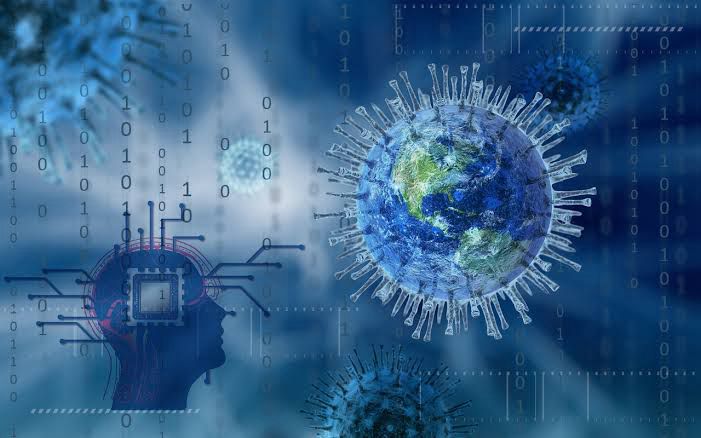The COVID-19 pandemic presented an unprecedented global health crisis. As the virus rapidly spread across borders, overwhelming healthcare systems and disrupting daily life, a critical need arose: understanding and predicting its trajectory. How fast would it spread? Where would outbreaks occur? When would hospitalizations peak? Answering these questions became paramount for policymakers, healthcare providers, and the public. Enter data science – a field uniquely equipped to handle the massive, complex, and often messy datasets generated by the pandemic.
What is Data Science, Anyway?
Before diving into its role in the pandemic, let’s clarify what data science entails. At its core, data science is an interdisciplinary field that uses scientific methods, processes, algorithms, and systems to extract knowledge and insights from structured and unstructured data. It combines elements from:
- Statistics: Understanding probability, hypothesis testing, and modeling techniques.
- Computer Science: Utilizing programming skills (like Python or R), database management, machine learning algorithms, and big data technologies.
- Domain Expertise: Applying knowledge specific to the area being studied – in this case, epidemiology, public health, virology, and human behavior.
The typical data science workflow involves:
- Data Collection: Gathering raw data from various sources.
- Data Cleaning & Preprocessing: Handling missing values, errors, and inconsistencies to prepare data for analysis.
- Exploratory Data Analysis (EDA): Visualizing and analyzing data to identify patterns, trends, and anomalies.
- Modeling: Building mathematical or computational models (statistical, machine learning, simulation) to understand relationships or make predictions.
- Interpretation & Communication: Translating model results into actionable insights and communicating them effectively, often through visualizations like charts and dashboards.
Data Science vs. COVID-19: A Critical Partnership
The pandemic generated an explosion of data from countless sources:
- Official Case Counts: Reported infections, hospitalizations, deaths, and recoveries from public health agencies.
- Testing Data: Number of tests performed, positivity rates.
- Mobility Data: Anonymized location data from smartphones showing population movement patterns.
- Genomic Sequencing Data: Tracking viral variants and their spread.
- Healthcare Capacity Data: Hospital bed availability, ICU occupancy, ventilator usage.
- Demographic Data: Age, location, pre-existing conditions of affected populations.
- News and Social Media: Sentiment analysis, tracking public discourse and potential unreported outbreaks (though often noisy).
Data science provided the tools and methodologies to harness this deluge of information and turn it into predictive power.
How Data Science Predicted COVID-19 Spread: Key Techniques
Predicting a novel pandemic is incredibly complex due to factors like changing virus characteristics (variants), evolving human behavior (mask-wearing, lockdowns, vaccination), and data limitations. However, data scientists employed several types of models:
- Compartmental Models (SIR/SEIR): These are traditional epidemiological models. They divide the population into compartments – Susceptible (S), Exposed (E), Infected (I), Recovered (R) – and use differential equations to model how individuals move between these states over time.
- How Data Science Enhanced Them: Data science helped calibrate these models using real-time data (case counts, mobility) to estimate key parameters like the transmission rate (R0 or Rt) and the impact of interventions (e.g., how much lockdowns reduced transmission). They could also incorporate more compartments (e.g., Hospitalized, Vaccinated).
- Statistical and Time Series Models (ARIMA, Prophet): These models focus on identifying patterns and trends in historical data (like daily new cases) to forecast future values.
- Application: Useful for short-term predictions (e.g., predicting cases in the next few days or weeks) based on recent trends. They are generally simpler but can struggle with sudden shifts caused by policy changes or new variants.
- Machine Learning Models (Regression, Random Forests, Neural Networks): These models learn complex patterns directly from large datasets without necessarily relying on predefined epidemiological assumptions.
- Application: Used to predict individual risk factors, forecast hospital surges by analyzing relationships between mobility, testing, cases, and hospitalizations, or identify potential outbreak hotspots by combining various data streams. They can capture non-linear relationships that simpler models might miss.
- Agent-Based Models (ABM): These complex simulations model the behavior and interactions of individual “agents” (representing people) within a population. Researchers can program agents with specific characteristics (age, location, health status) and behaviors (going to work, socializing) and simulate how the virus spreads through their interactions under different scenarios (e.g., with or without mask mandates).
- Application: Powerful for understanding the micro-level dynamics of spread and testing the potential impact of highly specific interventions. However, they are computationally intensive and require detailed behavioral data.
Visualization and Communication: Making Sense of the Numbers
A crucial aspect of data science during the pandemic was effective communication. Complex model outputs needed to be translated into understandable formats for decision-makers and the public. Interactive dashboards (like the famous Johns Hopkins University dashboard), maps showing geographic spread, and charts illustrating trends and projections became vital tools for conveying the urgency and state of the pandemic.
Challenges and Limitations
Despite its successes, data science faced significant hurdles:
- Data Quality and Delays: Initial data was often incomplete, inconsistent across regions, and subject to reporting lags, making real-time prediction difficult.
- Changing Dynamics: The virus evolved (new variants), and human behavior constantly shifted, requiring models to be continuously updated and recalibrated.
- Model Assumptions: All models rely on assumptions that might not perfectly reflect reality.
- Ethical Concerns: The use of mobility and personal health data raised privacy concerns.
The Legacy
The COVID-19 pandemic highlighted the indispensable role of data science in modern public health. It demonstrated the power of integrating diverse data sources, employing sophisticated modeling techniques, and communicating insights clearly to navigate crises. While prediction was imperfect, data-driven insights informed critical decisions about resource allocation, lockdowns, mask mandates, and vaccination strategies, undoubtedly influencing the pandemic’s course. The infrastructure, collaborations, and methodologies developed during this time will be invaluable for facing future public health challenges.

